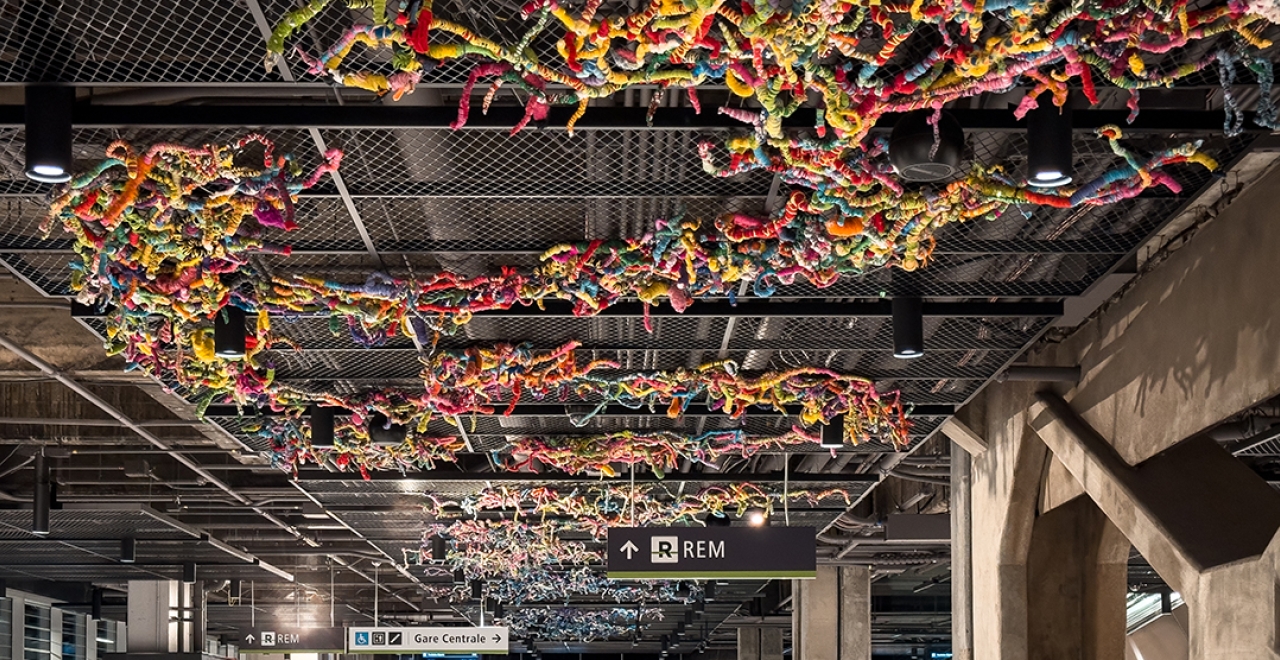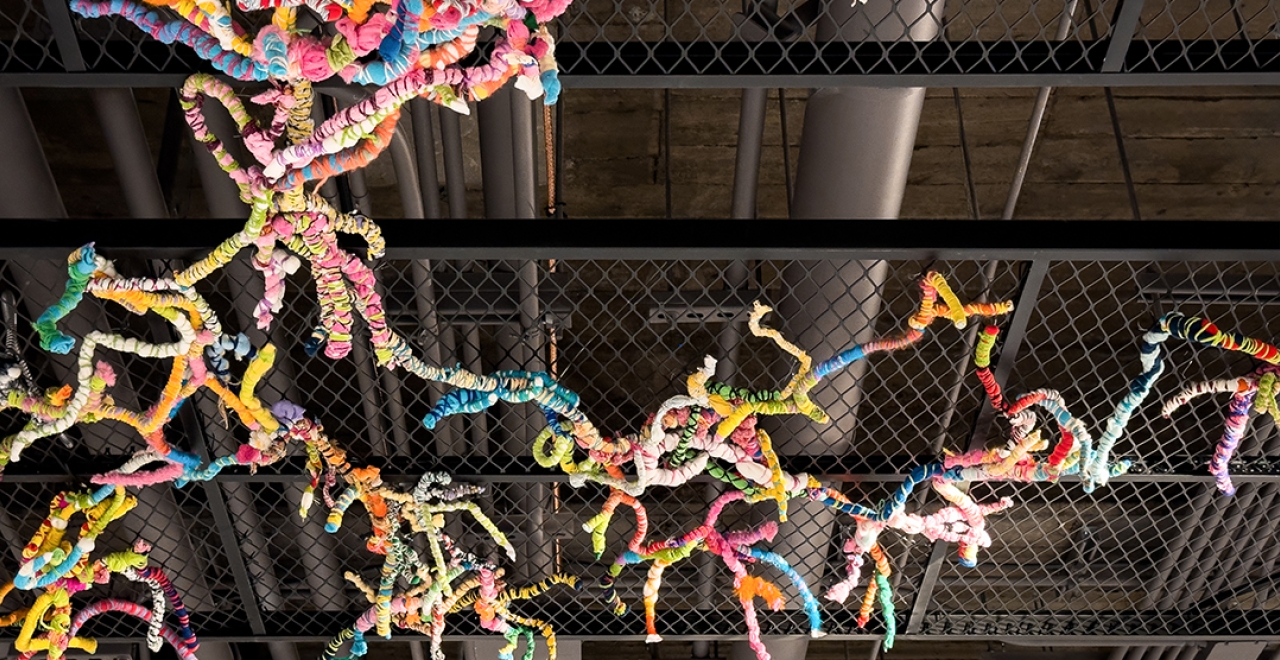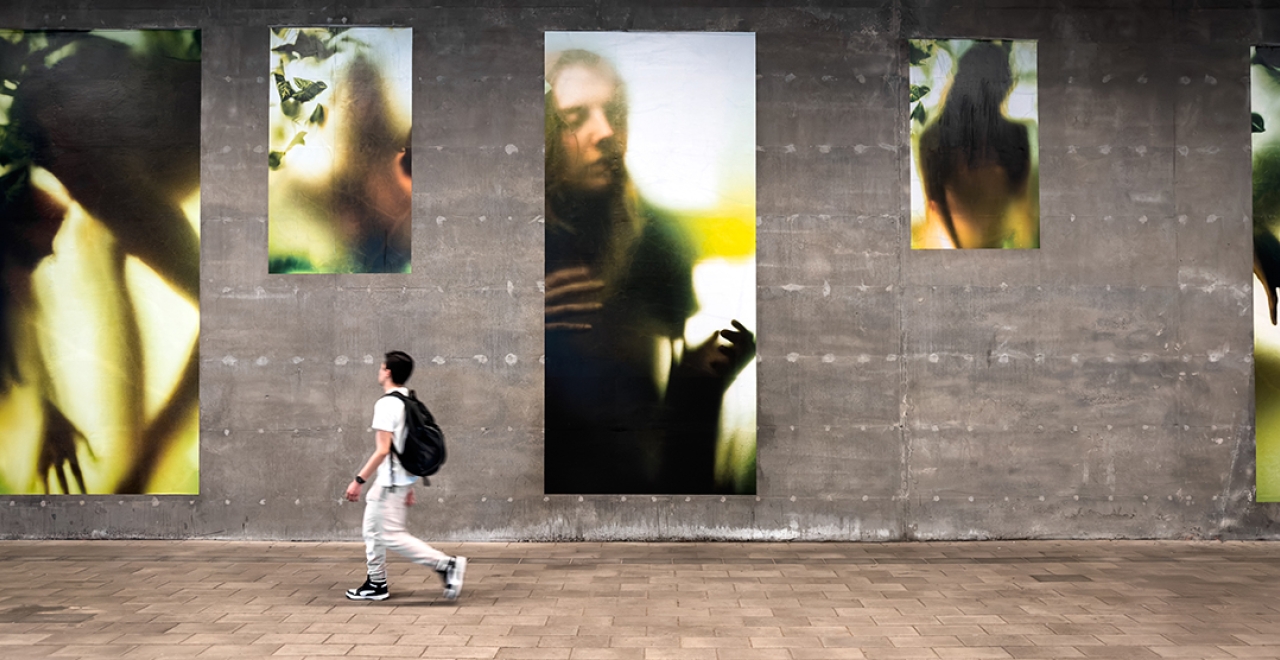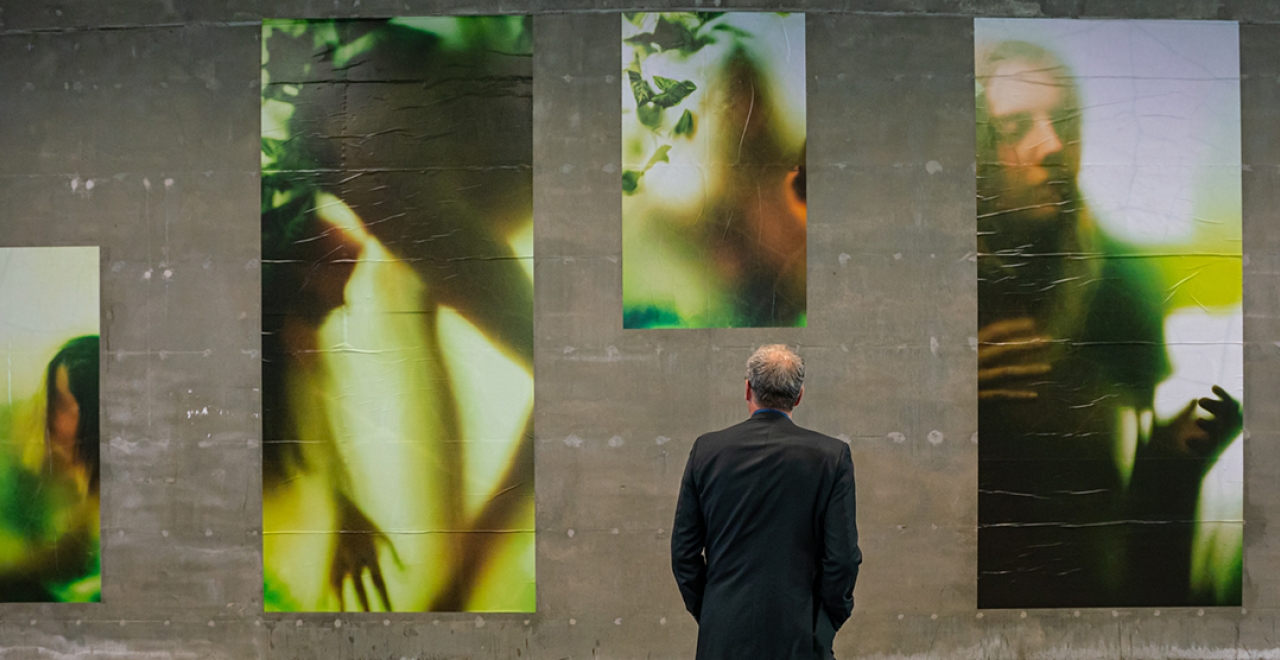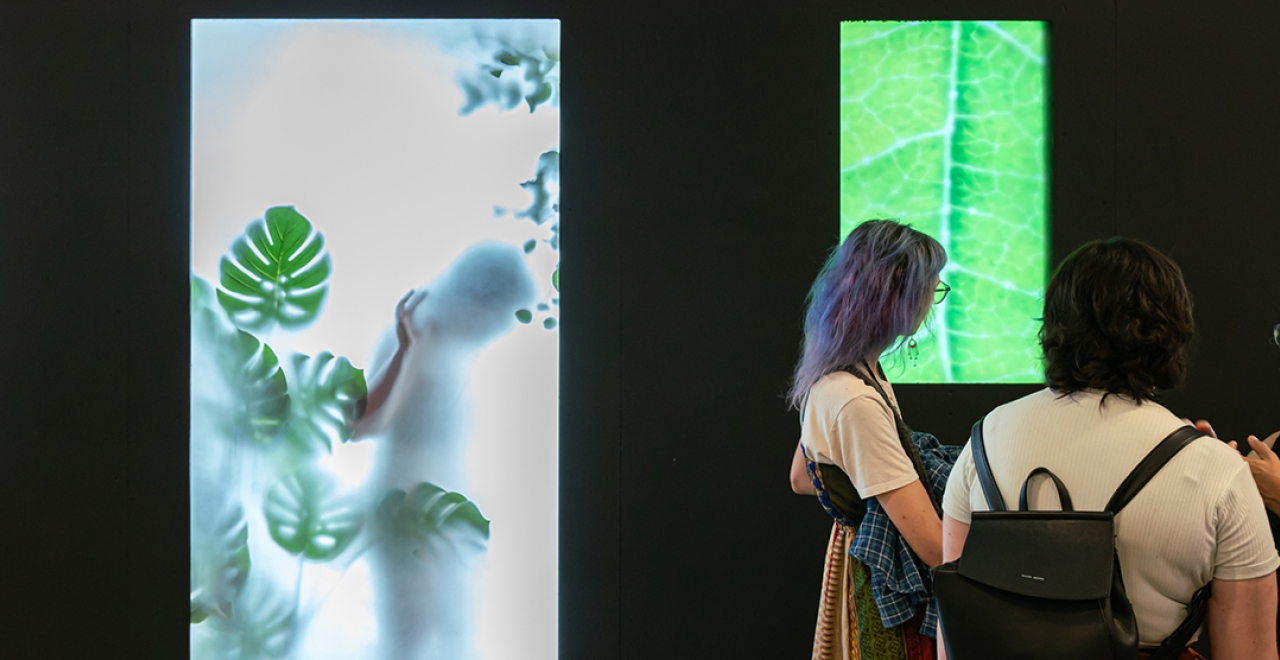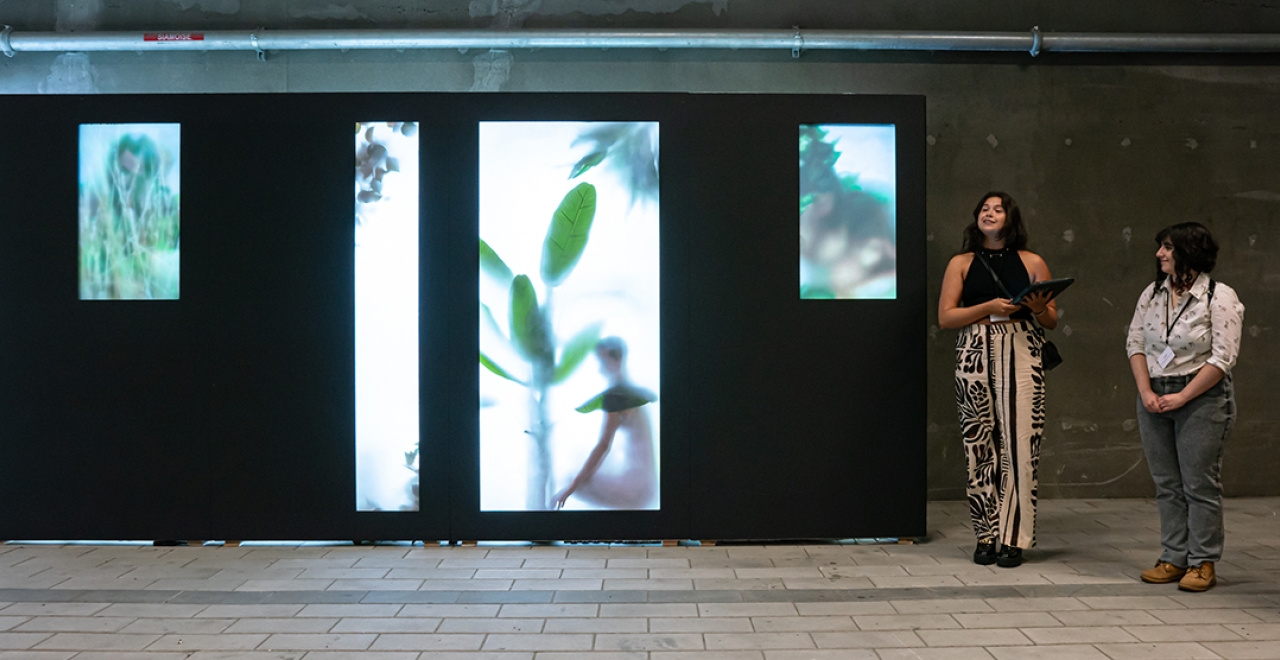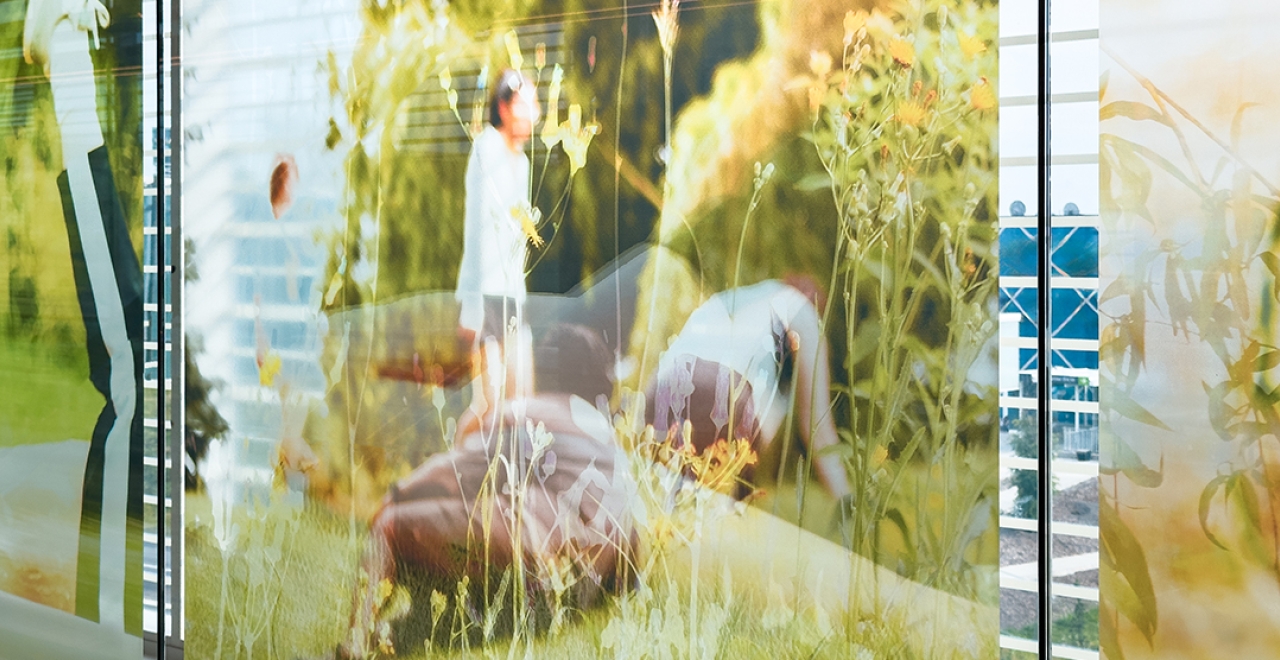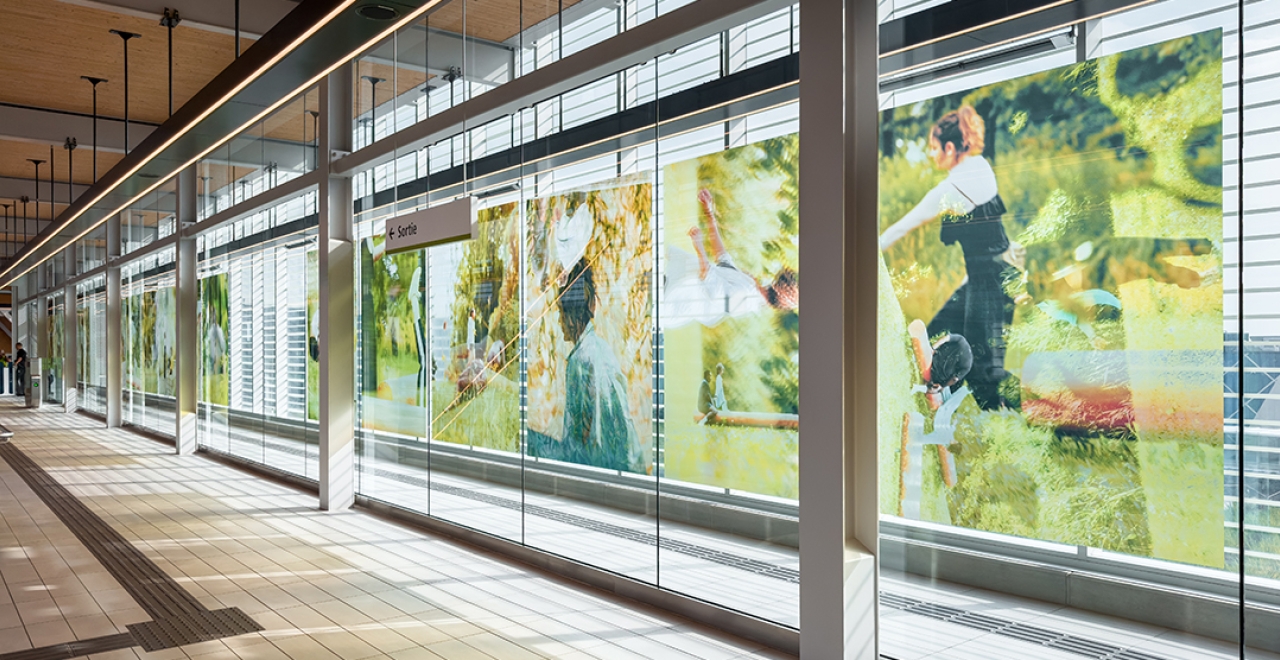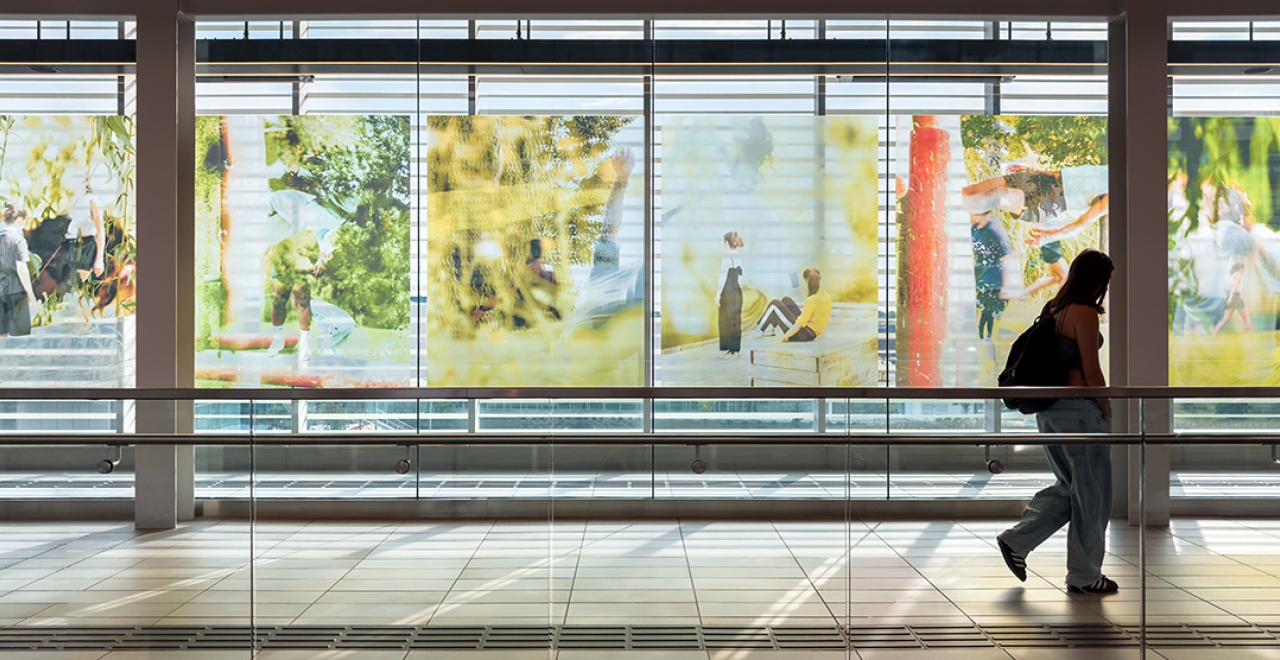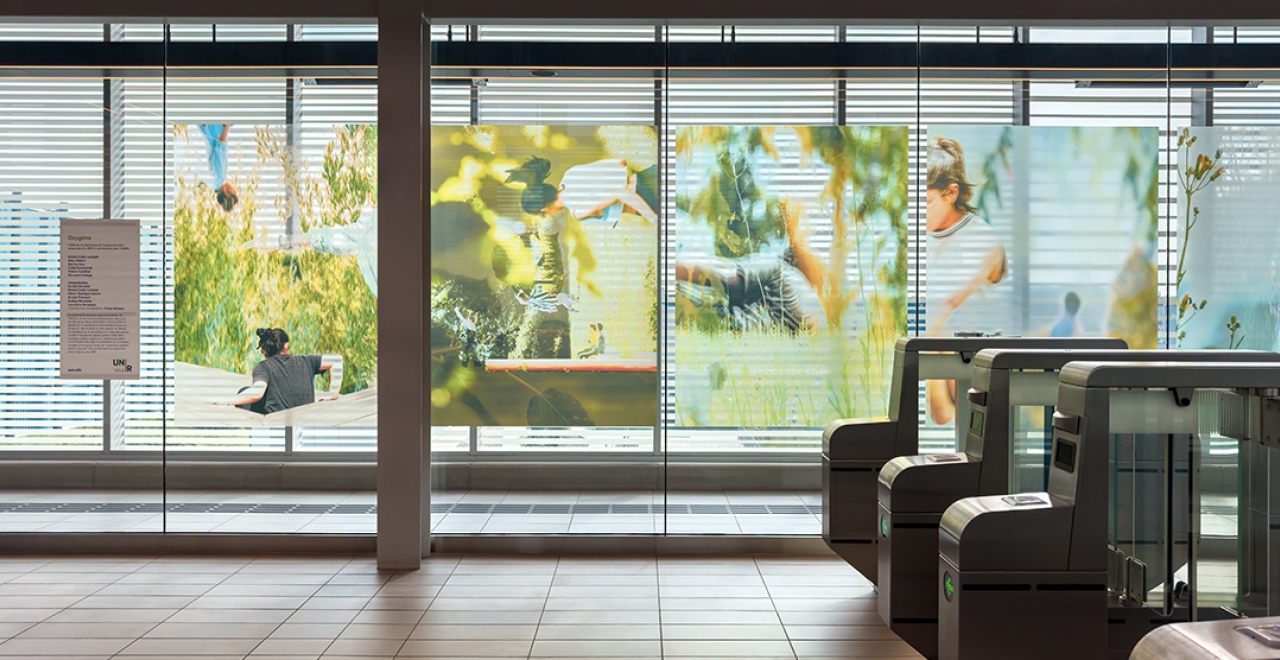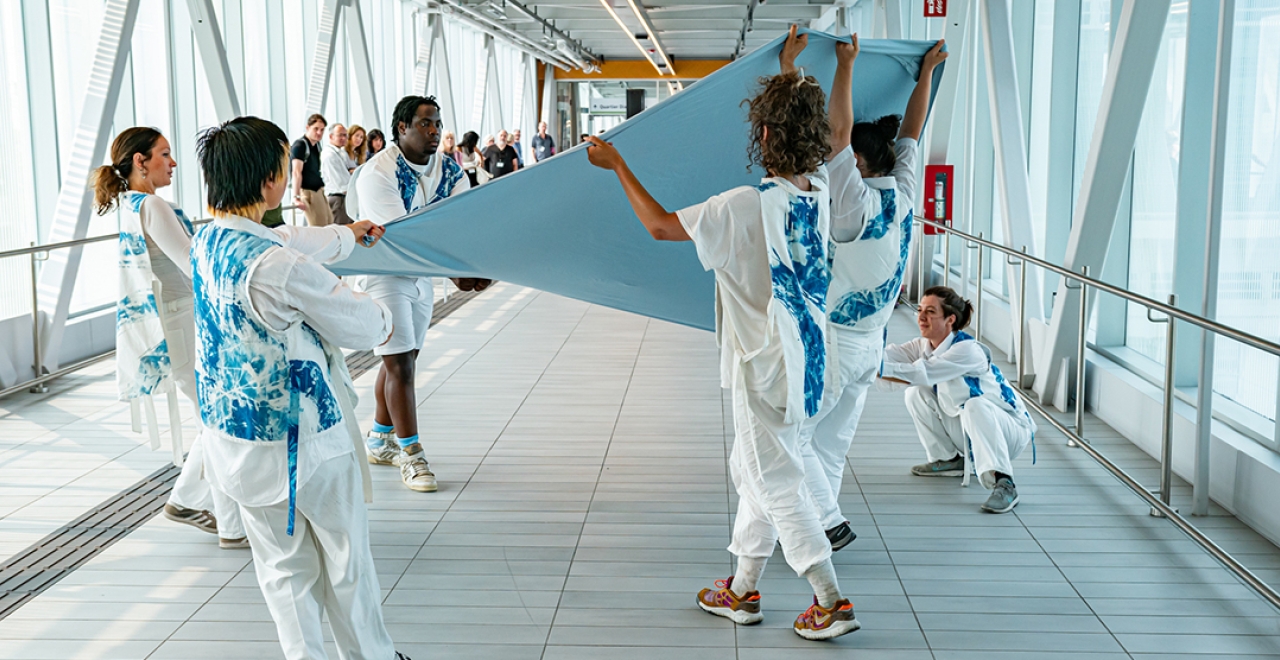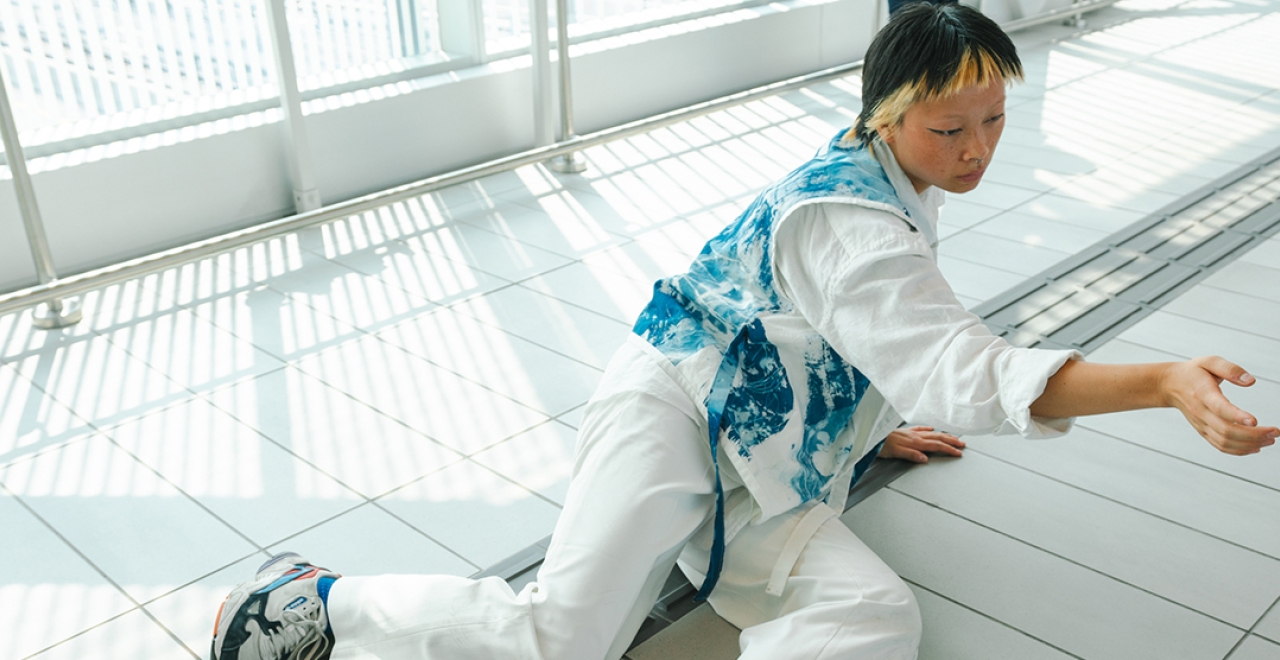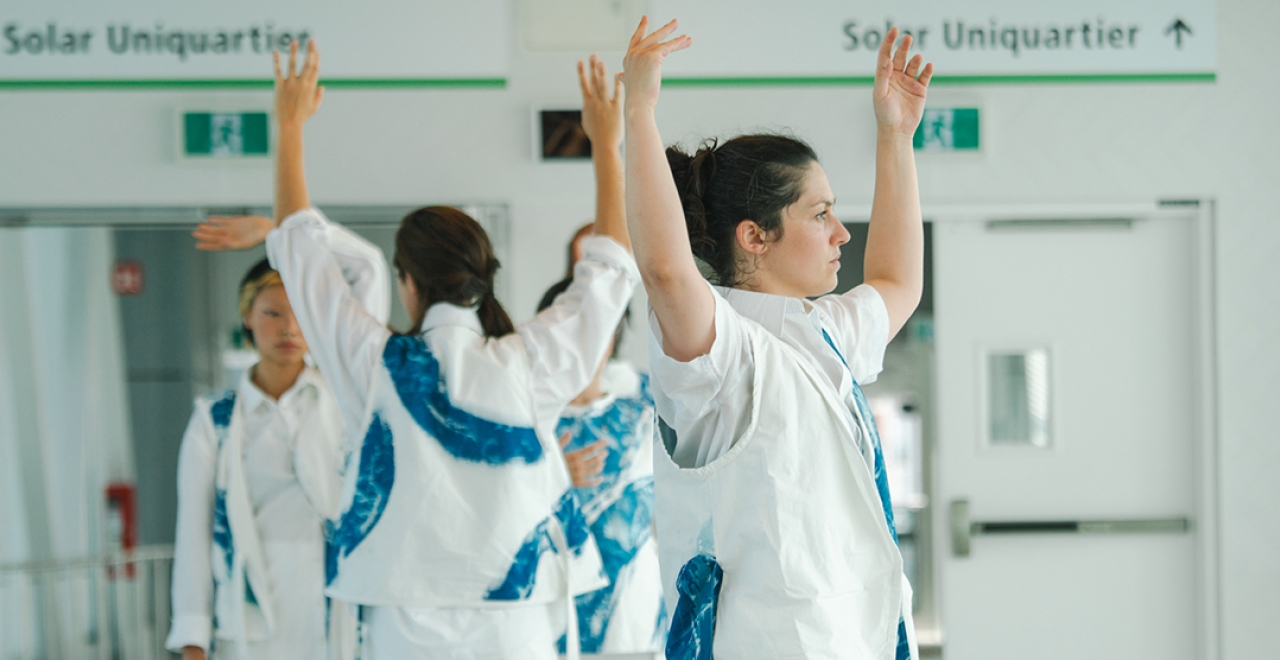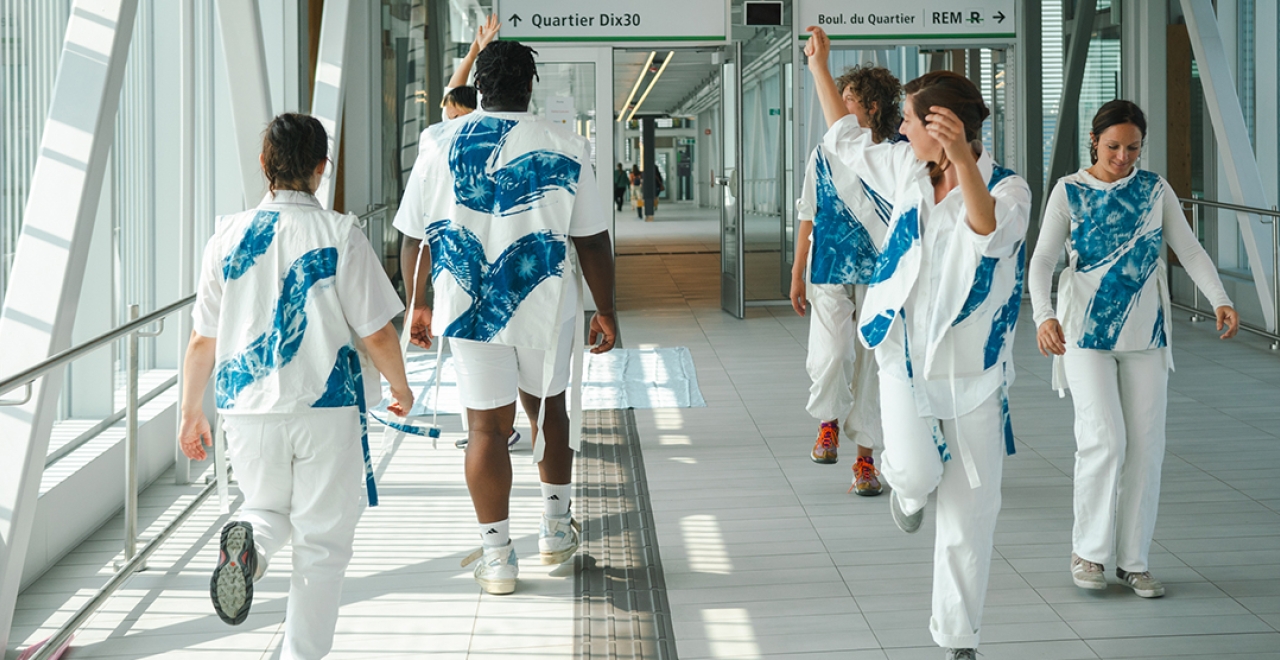Second edition: UQAM
Panama, Du Quartier and Gare Centrale stations, summer 2024
The Université du Québec à Montréal (UQAM) has created the second edition of the temporary artwork program supported by the REM under the supervision of artists and instructors Caroline Laurin-Beaucage and Nelly-Ève Rajotte, from UQAM’s dance department and design school, respectively, as well as with the collaboration of guest artist Jonathan Villeneuve from Ateliers Belleville.
Created as a component of the course “Magnifier le présent : approches interdisciplinaires pour œuvres d’art public,” the three temporary works focused on how to celebrate the present and portray it as grander, from a care and inclusion perspective, in a specific sphere: that formed by the REM and its passengers.
The works
Trajectoires Tissées et Entrelacées Éc(h)o : passage du vivant Oxygène
Inspired by roots that stretch and intersect beneath the earth, the work Trajectoires tissées et entrelacées is a collaborative textile installation made up of thousands of pieces of reclaimed fabrics entwined in wool. Linked together, these roots create an immense network that evokes the paths and daily interactions of users of the Réseau express métropolitain (REM). The diversity of colours, shapes and textures symbolizes the rich multiculturalism that imbues this station. The work is displayed organically, suspended from Central Station’s 16 ceiling grills.
By transforming reclaimed materials into a work of art, Trajectoires tissées et entrelacées highlights the importance of sustainability and recycling. Also, entwining scraps of fabric in wool is a performative and meditative act that promotes several principles, including the importance of taking a quiet moment to reflect.
This installation invites us to examine our own journey through the city, to recognize the invisible contributions of others and to understand how these connections shape our daily lives.
Creative process
A great deal of energy and creativity went into crafting close to 550 metres of textile roots. Two thirds of the roots were produced by the three artists of the Collective, who spent two months merrily rolling wool whenever their hands were free, particularly in the metro and on the bus. Nearly a hundred Montréal residents, of all ages and backgrounds, contributed during participatory art workshops held in Montréal, in collaboration with organizations such as the Cercle des Fermières Ahuntsic and Cœur-de-l’Île, Le Milieu and Petites-Mains. This initiative underscores the strength of diversity and collective creation, a central aspect of the project.
It took dozens of kilograms of reclaimed fabric and hundreds of balls of wool to bring this project to life. With a total weight of close to 90 kilograms spread across the 16 grills, these roots are a testament to the magnitude of this collective work.
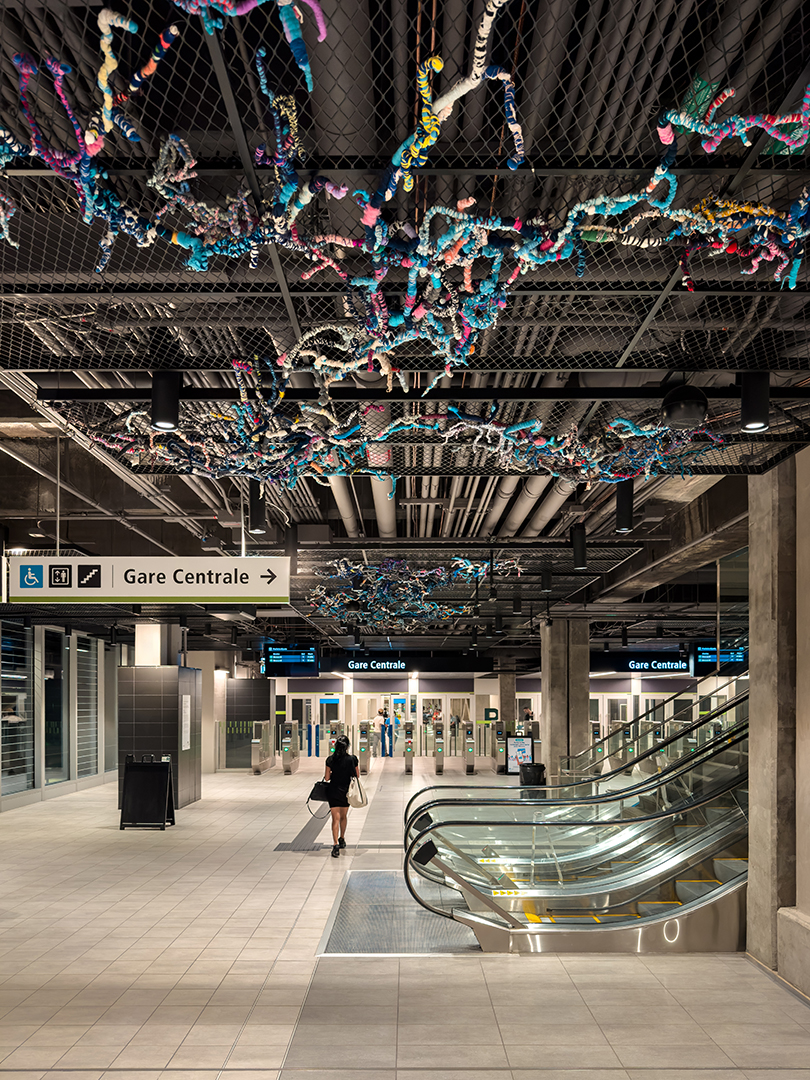
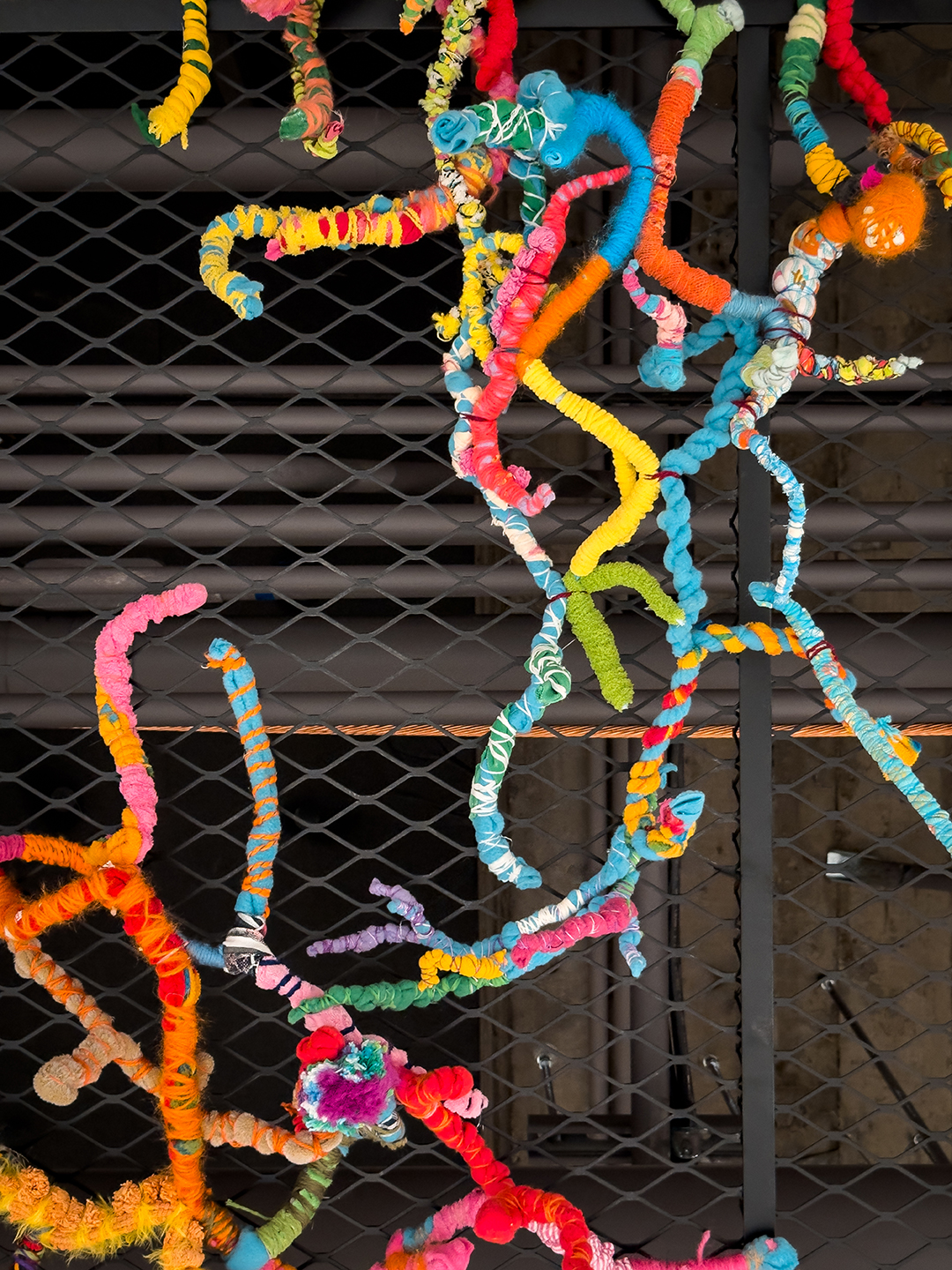
Éc(h)o : Passage du Vivant is an artistic installation in the REM’s Panama station access tunnel, transforming a transportation space into a locale for green therapy. The work includes videos, photos, sound and live performances, creating an immersive experience that juxtaposes the animate and the artificial.
Upon entering this tunnel, users are greeted by a wooden structure with frosted windows. On the other side, enormous decals seem to echo these windows, taking over the space like an overgrown garden. These elements are designed to reflect the resilience and the beauty of life. The performances add a living dimension, where the performers embody the vitality of the natural world.
The work explores living beings’ ability to survive and adapt, even in contrived environments. By creating a harmonious cohabitation between the artificial and the animate, Éc(h)o : Passage du Vivant invites users to consider passing through this space as a contemplative and reflective experience, rather than just a utilitarian act. The dialogue between nature and technology highlights the importance of environmental mindfulness and the positive impact this outlook can have on our daily life.
By integrating this installation into the cycle of the repetitive trips of the REM and its passengers, the work becomes part of an ecosystem of continuous movement. Each trip serves as a reminder of the cyclical nature of life, transforming the everyday into an experience of renewal and reconnecting with the living.
Creative process
The creative process for the installation occurred spontaneously. It all started with a wild idea: creating an urban vivarium. How did we incorporate our diverse artistic practices into this vision while respecting the artistic direction? Some took a walk in the forest, others observed their own plants, while yet others studied plants that have survived since the age of dinosaurs. Following this research, the idea of playing with the notion of resilience struck us as the obvious choice. This led to a juggling act between the real and the fake, to transform the Panama access tunnel into an artistic experience that feeds the imagination of our urban visitors.
We’re aware of our own environmental impact and designed this temporary work with a sustainable approach to demonstrate our ecological commitment. As a result, 50% of the material used for the structure is second-hand, and will be reused or donated at the end of the exhibition. This approach reflects our intention to blend art and environmental responsibility.
Oxygène
Artists: Ariane Dubé-Lavigne, Alice Hébert, Alynna Gao, Colin Dumouchel, Tristan Cardinal and Xhunaxhi Ortero-Ortega
Interpretation: Aurélie Brunelle, Ariane Dubé-Lavigne, Pierre-Rodrigue Kwemi, Anouk Thériault, Audrey Rochette and Lou-Anne Rousseau
Contribution to the concept: Victor Imbeau
Video: Laurence Suprenant
The intersecting of an indoor and an outdoor space, a walkway suspended in the air and two feet in the grass, the Du Quartier station and Brossard’s Grand Parc Urbain: artists in visual arts, design, architecture and dance have created a visual work of art inspired by performative gestures in these respective public spaces. This multidisciplinary concept combines everyday movements, photographic images and textile prints to create a breathing space in the REM.
This project brings a breath of fresh air to Du Quartier station, offering a moment for contemplation and wellbeing. Users can pause before continuing along the path that led them to travel on the REM. Each pause becomes an opportunity to change their personal trajectory, discover their surroundings from a fresh perspective and contemplate the every day with a new outlook.
Creative process
Developing the idea began with asking how to inhabit such a linear, structured and formal space like the Réseau express métropolitain (REM) Du Quartier station. With this question in mind, we visited the area surrounding the station to better understand and document this public space.
Our team observed six actions that seemed to be pumped with oxygen, as if they were coming to life, inspired by the daily movements of REM users. They were reproduced by six performers in Brossard’s Grand Parc Urbain, specifically in three places that we named:
le coin
la plaine
la colline
In each of these areas, the performers inhabited the space based on one of the six movements observed. Discovering new ways to move, to play, to engage, along with the performers’ intuitive way of moving across the space, allowed for photographic data and trajectory information to be gathered.
This was then reflected in the vinyl prints installed on the windows of Du Quartier station as a way of keeping traces of this performative art project that took place both outside and inside the station alive.
Four performances took place in parallel on one of the walkways leading to the station. Just like the actions that were sculpted by the environments with which they were in contact, the artists’ clothing also had traces of materials from the places visited, which resulted in them bringing a footprint of these organic and playful spaces into the REM.
Learn more:
